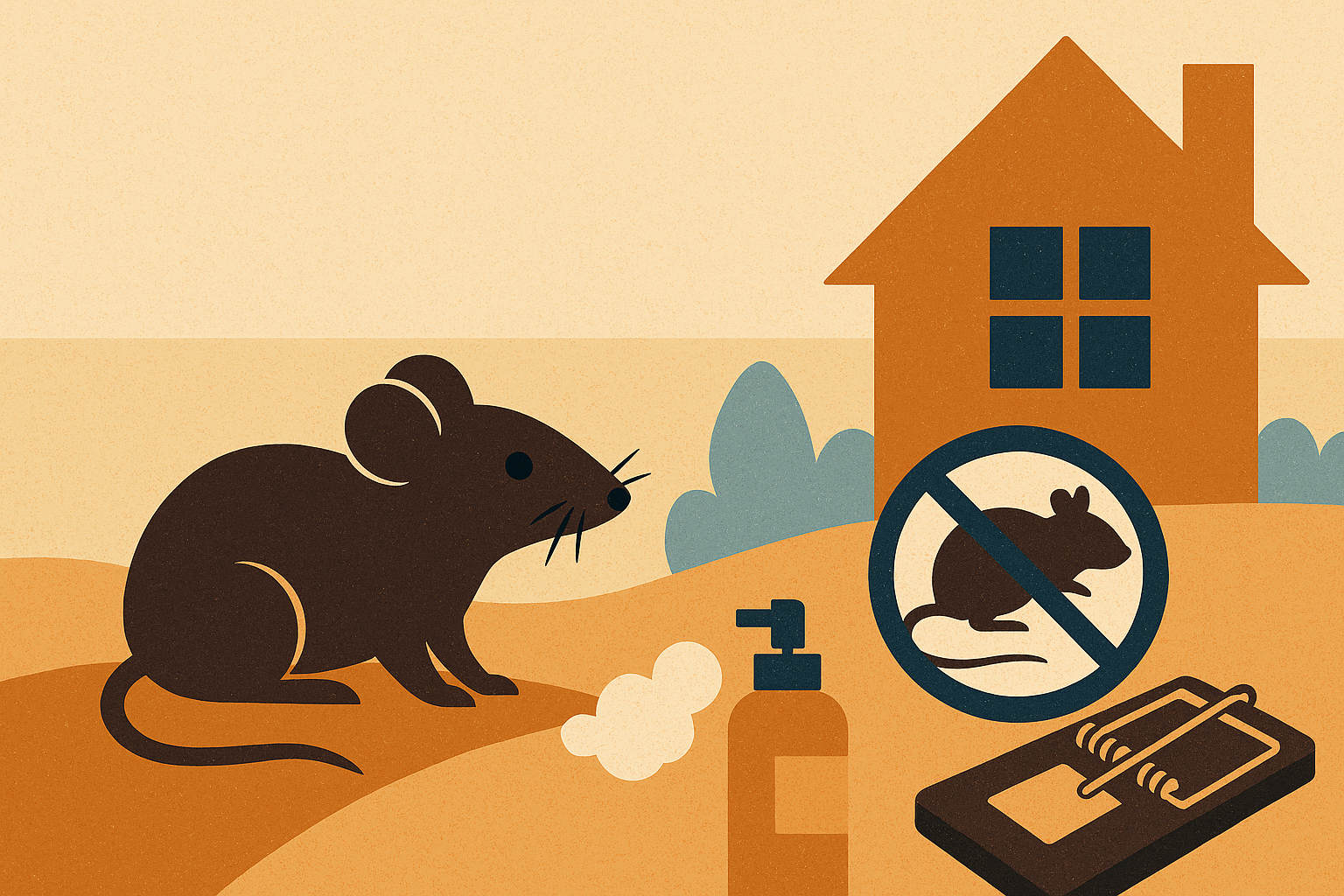Rodent problems aren’t just about the annoyance of skittering noises behind walls or half-chewed cereal boxes in the pantry. Mice and rats can carry pathogens that pose real risks to human health. The Centers for Disease Control and Prevention highlights how these pests can spread hantavirus, leptospirosis, and other serious illnesses through their droppings, urine, and even bites. This threat is often magnified when they find comfortable nesting areas within homes, where they can settle in unbothered for months on end. It doesn’t take much: a few stray crumbs on the kitchen floor, a loose seal near a door frame, or a poorly secured trash bin can tempt hungry rodents. Once they’re inside, they breed quickly and can be surprisingly stealthy, which makes regular housekeeping a key part of preventing infestations. An infestation that begins quietly in a basement corner or attic space can spread throughout a house, leading to contaminated surfaces, structural damage, and a constant worry about what might be lurking in the walls. Even people who consider themselves clean and tidy might discover that mice are incredibly resourceful creatures, capable of finding food and safe nesting spots in the most unexpected places. Everything from pet food dishes to slightly cracked containers becomes an open invitation. Overlooking these details could give rodents the foothold they need to become long-term, uninvited tenants.

Some people imagine rodents sneaking in when a door is accidentally left open, but the reality is that mice and rats can slip through holes the size of a dime (in the case of mice) or expand narrow crevices with their teeth. The first step is to thoroughly inspect the perimeter of your home, including the foundation, crawl spaces, and any areas where utilities enter. Even an unnoticed gap behind the HVAC unit or under loose siding can become a well-used passageway. Check basement windows for torn screens and ensure that any vents particularly those close to the ground are covered with durable, rust-proof grills. It’s also wise to run a hand along the edges of exterior doors, feeling for drafts that might indicate gaps large enough for rodents to squeeze through. Beyond the foundation, roofs can be also be a culprit. Overhanging tree branches, clogged gutters, or broken shingles allow savvy rats to reach attic vents or loose flashing. Once they make it under eaves or past vents, rodents can move freely and set up shop with minimal disturbance. If you suspect an invasion, look for droppings or gnaw marks near these spots, and pay special attention to greasy rub marks along walls or corners. Rodents tend to travel the same paths repeatedly, wearing down trails that become easy to spot when you know what to look for.
Finding the trouble spots is only half the battle; sealing them off effectively is the real game-changer. One classic method is to press steel wool into cracks and small holes, which rodents find unpleasant to chew through. After packing it in, follow up with a hard-setting sealant or caulk on top. For bigger gaps, a combination of hardware cloth and weather-resistant foam can create a formidable barrier. It might seem tedious to tackle every tiny opening, but even one unchecked gap can become a superhighway for these determined pests. Pay attention to utility lines that pass through walls, wherever pipes, cables, or vents enter your home and reinforce those areas accordingly. A rolled-up patch of hardware cloth or metal flashing often does the trick, provided you secure it well and ensure there aren’t any edges that a determined rat can pry loose. For doors and windows, fresh weatherstripping or a sturdy sweep can make a big difference. It’s amazing how often a door that looks closed is actually providing a half-inch of clearance. You’ll also want to keep the environment outside your home tidy. Overgrown bushes, firewood piles stacked against exterior walls, or tall grass can camouflage rodent activity, giving them extra time to find ways indoors. If you handle each suspect spot with care, you’ll eliminate the easy entry points that keep rodents well-fed and comfortable.
No matter how effectively you seal up holes, rodents still have a sixth sense for finding overlooked crumbs or unsealed food. Make it a habit to store grains, cereals, and pet food in tightly sealed containers that rodents can’t chew through. Regularly empty trash cans, and choose models with lids that fit snugly—especially outdoors, where trash bins can be a magnet if left unsecured. When you clean your kitchen, don’t forget to check behind appliances, as the warmth of a refrigerator motor can create a cozy environment. Beyond these basics, some folks like to keep a close eye on local rodent population trends by consulting resources such as the
Environmental Protection Agency’s Safe Pest Control page. Meanwhile, the University of Minnesota Extension website offers thorough pest identification guides, and Penn State Extension has extensive tips on protecting homes in regions with fluctuating weather conditions. By checking reputable sources and staying informed about current best practices, you’ll be more likely to catch potential issues early. If an infestation persists, consider reaching out to a local pest control professional who can spot hidden entry points or nest sites that the average homeowner might miss. It’s far better to pay a little upfront for professional insight than to contend with ongoing infestations that compromise both health and property.
Once you’ve fortified your home, regular checks and ongoing vigilance are your strongest allies. It’s easy to grow complacent when there’s no immediate sign of trouble, but rodents can return if you relax your guard. Every few months, walk around your home’s exterior and do a quick inspection of any sealed areas, just to confirm they’re still intact. Storms and seasonal temperature shifts can weaken caulking or loosen hardware cloth, and small, unnoticed issues can turn into big invitations for curious critters. Likewise, keep up your indoor cleaning routine, making sure food items are stored properly and crumbs are wiped away. If you suspect new activities that go beyond your current methods, the
CDC’s rodent information page offers an in-depth look at potential health risks and what to do if you come into contact with mice or rats. Should you need more extensive guidance or a tailored solution, feel free to consult a comprehensive
mice and rats resource page that highlights expert strategies. Maintaining a rodent-free living space is an ongoing process, but each small step, like patching a crack or keeping a pantry free of scattered crumbs pushes these invaders further away from your property. By being thorough and consistent, you can enjoy a cleaner, healthier home free of unwanted pests for years to come.
Quick Links
> About Us
Our Guarantee
--
We're committed to 100% customer satisfaction, whether that means providing convenient payment plans or performing services between treatments, Sol Pest Control is your best choice for pest control here locally.









